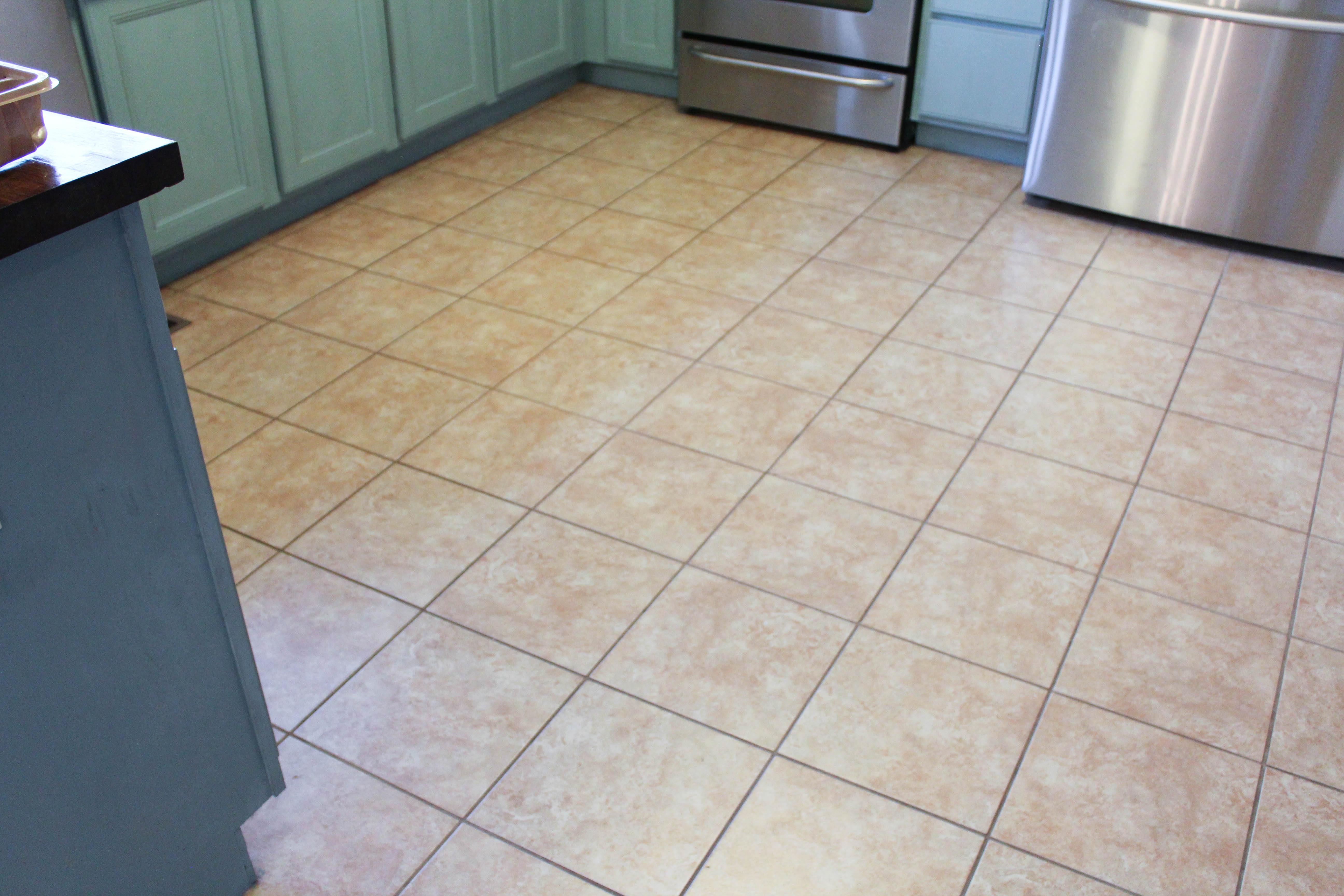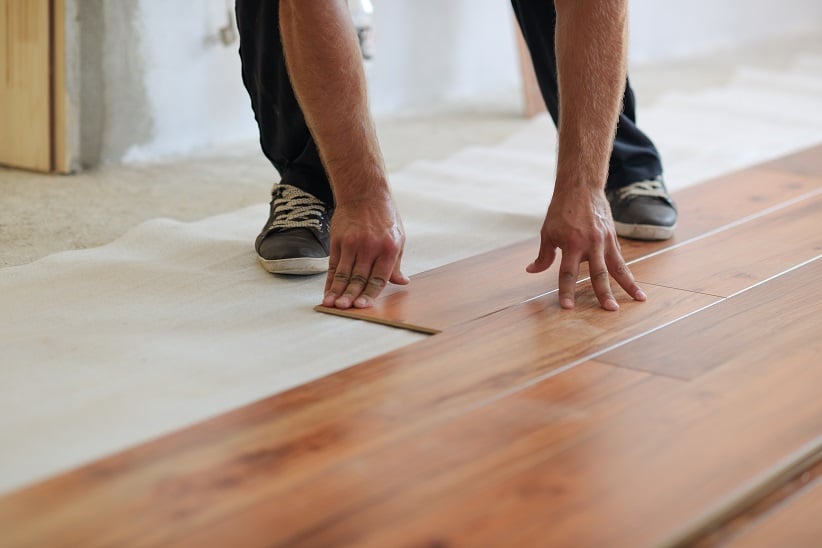Have you ever stared at your tired, worn-out vinyl flooring, dreaming of a fresh, new look? Maybe you’ve even considered ripping it all out and starting fresh. But before you embark on a major renovation, consider this: can you lay new vinyl flooring over the old stuff? It’s a common question, and the answer, as with many things in the world of home improvement, is – it depends.

Image: goodgluetoholdvinylflooringtilesdown.blogspot.com
Let’s imagine this scenario: you’ve just moved into a new home with perfectly functional but slightly outdated vinyl flooring. You envision a modern, stylish upgrade without the hassle and cost of complete removal. It’s a tempting thought, right? The possibility of a quicker, easier solution to revamp your floors is certainly appealing. But is this a practical approach, or are you setting yourself up for potential problems down the line? This guide delves into the pros and cons of laying new vinyl over existing vinyl, helping you make an informed decision.
Is Laying Vinyl Over Vinyl a Good Idea?
Deciding whether to lay new vinyl flooring over existing vinyl depends on several factors, including the condition of your existing floor, the type of new vinyl you’re considering, and your personal tolerance for potential issues. Let’s break down the pros and cons to help you weigh the options.
The Pros:
- Cost Savings: Laying new vinyl over existing vinyl can significantly reduce the cost of a flooring project. You’ll save on labor for removing the old floor and potentially on the cost of new subfloor material.
- Faster Installation: Applying new vinyl over existing flooring eliminates the time-consuming process of removing the old floor. This can be a significant advantage if you’re aiming for a quick renovation.
- Less Mess: Removing existing flooring can be a messy and dusty process. Choosing to lay new vinyl on top avoids this disruption and mess, especially beneficial if you have allergies or sensitivities.
The Cons:
- Uneven Surfaces: Existing vinyl flooring might not be perfectly smooth, potentially resulting in an uneven surface for the new vinyl. This can create tripping hazards and lead to premature wear on the new flooring.
- Uneven Thickness: The combined thickness of the old and new vinyl flooring might create issues with doorways, transitions, and appliances. You might need to adjust door thresholds or trim baseboards to accommodate the added height.
- Potential for Damage: If the old vinyl flooring is damaged or coming loose, laying new vinyl on top might trap the problem and ultimately lead to issues with the new flooring.

Image: imagetou.com
What to Consider Before Laying New Vinyl Over Existing Vinyl
Before you dive into this project, it’s crucial to assess your existing floor. Consider these key elements:
1. Condition of the Existing Vinyl:
- Is it securely attached to the subfloor? Loose or damaged tiles are a major no-go. They could cause the new flooring to buckle or create a tripping hazard.
- Are there any cracks or seams? Large cracks or gaps in the existing vinyl might allow moisture to seep through and damage the new flooring.
- Is it free of bumps or dips? A smooth, even surface is essential for installing new vinyl over existing flooring.
2. Thickness of Existing Vinyl:
The combined thickness of the old and new vinyl might impact how your floor transitions to other areas. If the combined height creates a noticeable difference, you may need to make adjustments to door thresholds or baseboards.
3. Type of New Vinyl Flooring:
Different types of vinyl flooring have varying requirements. For example, luxury vinyl plank (LVP) might need a specific subfloor thickness or a smooth, level surface. Always check the manufacturer’s instructions for your chosen vinyl flooring type.
4. Your Personal Tolerance for Risk:
Ultimately, the decision to lay new vinyl over existing vinyl is a personal one. If you’re comfortable taking on some risk and are confident in your ability to properly prepare the existing vinyl floor, it can be a viable option. However, if you prioritize a flawless, long-lasting installation, it might be best to remove the existing flooring.
Tips for a Successful Vinyl Over Vinyl Installation
If you decide to go ahead with laying new vinyl over existing vinyl, here are some tips to make the project a success:
- Thoroughly clean the existing vinyl floor: Removing dust, debris, and any sticky residue from the old vinyl is crucial for a smooth, secure installation. Use a good quality floor cleaner and a damp mop.
- Assess for unevenness: Check the existing floor for any bumps, dips, or uneven areas. If necessary, use a leveling compound to address these imperfections before installing the new flooring.
- Work in small sections: Apply the new vinyl flooring in manageable sections to ensure the bonding process is correct and to help with the alignment of the planks or tiles.
- Use a quality underlayment: Installing underlayment over the existing vinyl floor can provide additional cushioning and support for the new flooring, helping to minimize sound and improve overall comfort.
Expert Advice: When to Hire a Professional
While laying new vinyl over existing vinyl can be a DIY project for some, there are situations where hiring a professional is recommended:
- If your existing floor is in poor condition: If your existing vinyl has significant damage or is loose, hiring a flooring expert is the best course of action. They’ll assess the situation, address any underlying issues, and ensure a secure, long-lasting installation.
- If you’re using specific types of vinyl flooring: Some vinyl flooring types, like LVP, require specialized installation techniques to ensure proper alignment and stability. A professional can handle these details with expertise.
- If you’re uncertain about your skills: Don’t feel pressured to tackle a project beyond your comfort level. If you have any doubts about your ability to properly install the new flooring, it’s best to seek professional help.
FAQ:
Q: Can I lay vinyl plank flooring over existing vinyl?
A: Generally, yes, you can lay vinyl plank flooring over existing vinyl. However, the condition of the existing vinyl is crucial. It must be securely attached, free from damage, and relatively smooth to create a suitable surface for the LVP planks.
Q: Can I install luxury vinyl tile (LVT) over existing vinyl?
A: Similar to LVP, installing LVT over existing vinyl is possible if the existing surface is smooth, level, and in good condition. Always consult the manufacturer’s installation guidelines for your specific LVT product.
Q: Can I lay vinyl sheet flooring over existing vinyl?
A: Laying vinyl sheet flooring over existing vinyl is often doable, especially if the existing floor is in good condition and relatively smooth. However, be mindful of the combined thickness of the two layers, as it could create problems with door thresholds or appliances.
Q: How do I prepare existing vinyl flooring for new vinyl installation?
A: Thoroughly clean the existing vinyl floor, removing any dust, debris, or adhesive residue. Check for any bumps, dips, or unevenness. If necessary, use a leveling compound to smoothen out the surface before installing the new vinyl flooring.
Q: What type of underlayment should I use with vinyl over vinyl installations?
A: A high-quality felt or foam underlayment is recommended for added cushioning and support, minimizing sound transmission and improving comfort. It’s crucial to choose an underlayment compatible with the type of vinyl flooring you’re using.
Can You Lay Vinyl Flooring Over Existing Vinyl
Conclusion
Laying new vinyl flooring over existing vinyl can be a cost-effective and time-saving solution for updating your floors. However, it’s essential to carefully assess the condition of your existing vinyl flooring and weigh the potential risks. If you’re unsure about the process or have concerns about the condition of your existing floor, it’s always best to consult with a flooring professional to ensure a successful and long-lasting installation.
Are you considering laying new vinyl flooring over existing vinyl? Share your thoughts and experiences in the comments below!






